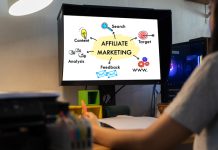By Ericka Marie Banting
Introduction
You developed a great product, researched the trends to market it, and promoted it on every relevant platform, including your standout website. You checked every essential step. In fact, upon looking at your site’s performance, your click-through rates are soaring, yet the sales are still slow. Your next potential customer, despite spending a lot of time on your site, might feel unmotivated to complete a purchase.
So, what gives?
The answer might be the lack of a well-strategized Content Marketing Funnel.
When you’ve just started learning the ropes, taking the reins of selling a product might feel like walking through a dark, cluttered room. In fact, 50% of small businesses fail within five years due to a lack of better marketing campaigns.
With overwhelming potential steps to take, you try to do everything, tripping as you go. In reality, randomly produced content in hopes of converting sales rarely sticks.
Understanding the Marketing Funnel and the Customer Journey
A marketing funnel helps you understand your customers’ wants and needs. Then, it helps you optimize their experience, from first becoming aware of your brand to being a loyal consumer. By creating a personalized journey, you are guaranteed completed purchases.
Just try to picture a funnel—wide at the top, narrow at the bottom. Your potential customers go through this funnel. They start as members of a broad market who have clicked on a link to your product. Their interest is at an all-time high but fleeting. As they move through the funnel, only those who remain are the ones who are a good fit for your qualified leads.
A customer journey can be divided into these stages:
- Awareness: “Oh, nice product. Who are you?”
- Consideration: “Hmm, interesting. Tell me more.”
- Conversion: “Wow! I’m sold. How do I buy?”
- Retention: “This is exactly what I wanted. I love it. Let me see what else you have in store!”
Understanding the progression of their journey empowers you to create and optimize content that addresses the customer directly.
Content Marketing Strategies For Every Stage of Your Customer’s Journey
As a marketer, you should always take into account how you can create content that resonates at every stage. Essentially, you are a mind reader, but being one doesn’t require complex magic tricks. You just need to learn which message is right at the correct time. Here’s how:
a. Awareness Stage: Building Brand Recognition
In the first stage, your objective should be to get noticed and introduce your brand to your audience. You should present a problem or a need that they might not even realize they have until you present them with answers. This presentation could be through blog posts, infographics, or social media content.
A good strategy in the awareness stage is simplifying a complex topic and creating eye-catching visuals that entertain and inform.
For example, you’re selling a background remover tool. Some great Instagram story ideas can use minimalism to showcase stunning and professional-looking photos. Then include attention-catching headlines like “Transform Your Photos in Seconds!” or “Discover the Magic of a Pro Visual with One Tap.”
Tips for Effective Content at This Stage:
- Focus on valuable content that informs your audiences without overselling your product.
- Take advantage of optimizing your content for SEO to rank higher in search engines and reach your target market faster.
- Subtly introduce your brand by presenting problem-solving content that makes them think and see value in your product.
Remember, this is the first stage and should not center on generating a sale.
b. Consideration Stage: Engaging and Nurturing Interest
This stage is where you entice your potential customers with your expertise. It’s time to reel them in by positioning your content as the only one they need. It’s crucial to now turn their interest into intrigue.
How, then, can you ensure that what you put out is not only informative but keeps them on their toes? You can present comprehensive content through in-depth guides, ebooks, webinars, and success stories through case studies or help them make informed decisions through thorough comparison posts.
Maybe you’re selling productivity software. You can create downloadable ebooks with titles like “The Ultimate Guide to Streamlining Your Workflow.” You can also host webinars where you can spotlight your expertise and let other experts weigh in as guests.
Tips for Effective Content at This Stage:
- Provide substantial and insightful content to make your brand the go-to for unbiased information.
- Visuals can effectively enhance your content. To make them more stimulating for easy absorption, use a remove bg tool to polish visuals.
- Gate high-value content and resources through email sign-up forms to enhance your lead-capture strategies.
This stage is all about setting the precedent that your brand is trustworthy and that you are the solution to your potential customer’s problems.
c. Conversion Stage: Encouraging Decision Making
Seal the deal. During this stage, your objective is to give your target market the final push to become loyal customers. The moment of truth—this is the stage where your audience is teetering on the edge of a finalized decision. Your content should be geared towards giving them the confidence to choose you.
Play into your brand’s strengths. Through product demos, let your audience see how you can solve their problems. Present them with customer testimonials and reviews to strengthen your social proof. Give them a taste of high quality through free trials or samples. There should be a visible and easily accessible FAQ for them to refer to.
You might have a blooming self-photography business and want to attract more customers. Create behind-the-scenes videos showing how your customers are enjoying their self-photoshoots. You can offer a limited-time promotion of at least one free print. It’s important as well to automate your social media pages to answer the most common questions they might have, like “What should they bring for the shoot?”
Tips for Effective Content at This Stage:
- Present the benefits. What do you bring to the table, and how will that make their life easier or better?
- Showcase customer success stories. 50% of customers trust a brand more if they have reviews from other consumers.
- Create content that addresses and overcomes common misconceptions.
At this point, choosing to buy from your business should come be as easy as breathing to your customers.
d. Retention Stage: Keeping Customers Engaged
This last customer journey touchpoint is very important. You need to turn potential prospects into loyal consumers. To do so, you need to entice them to buy from you or avail your services again. The truth of this matter is that having happy and engaged customers can be your business’ turning point or can end it.
Now, there are multiple ways to retain customers. Some tested and proven methods include newsletters, loyalty programs, and exclusive content.
Figuring out which one works for your brand depends on your business’s nature. For example, providing loyalty programs wouldn’t make as much sense when you are marketing a small thrift business. It would take time and money to be ready tech-wise just to establish an automated reward program.
If you are selling software, in this case, one that boosts productivity, you can send out a monthly newsletter. That could include productivity tips, new feature updates, and customer spotlights. At the same time, you can also run a social media campaign that encourages your users to share their “productivity win of the week.” This way, you can build up a community where professional voices are being highlighted.
Tips for Effective Content at This Stage:
- Use email marketing to regularly update your customers with tips, tutorials, or exclusive special offers.
- Take advantage of the features of social media platforms like Instagram Stories or Facebook reels.
- Spotlight positive customer reviews and new products through posts.
- Make use of polls or interactive questions to garner engagement and intrigue.
Measuring Success at Each Funnel Stage
Knowing your audience and creating content tailored to them is only the beginning of the battle. To truly harness the power of each stage, you need to measure your success.
In the Awareness stage, focus on metrics that show how well your content grabs attention. These metrics include:
- Reach: the total number of users who have seen your content
- Impressions: the number of times your content has appeared, even without engagement
- Website traffic: the number of people visiting your site organically
- Social media engagement: the number of likes, shares, and comments
In the Consideration stage, the metrics you should watch out for should help you understand how users interact with your content. These can involve:
- Engagement metrics like time spent on your site, bounce rate, and pages per session show whether users are staying longer and showing more interest as they interact with your content.
- Lead generation metrics such as gated content form submissions and email sign-ups.
- CTA click-through rates to show if your calls to action are persuasive.
During the Conversion Stage, you should look at how many leads are turning into customers. You can track this by looking at:
- Conversion rates to see how many purchased or signed up for a service
- Sales and revenue to look at the number of prospects that completed a desired action
- Cart abandonment rate to know how many customers ended up not completing a purchase
In the last stage, the goal is to keep customers engaged and encourage them to make repeat purchases. For the Retention stage, you should focus on:
- Customer Lifetime Value (CLV) which measures the total revenue a customer can generate over the course of their relationship with your business
- Repeat purchase rate to track how many are repeat customers
- Churn rate to see the percentage of former customers
- Post-purchase content to measure ongoing engagement to indicate sustained interest and brand loyalty
Tools and Techniques:
You now have an idea of what is a marketing funnel. You also know how you should use it to your advantage for each customer journey touchpoint. Here are some tools to further measure your funnel’s performance:
- Google Analytics: This essential tool tracks your website traffic, user behavior, and conversion rates.
- CRM systems (Hubspot or Salesforce): These help you track leads, monitor engagement, and measure conversions.
- Email Marketing Tools (Mailchimp or ActiveCampaign): These track email open rates, click-through rates, and post-purchase engagement conversions.
- Social Media Insights: Platforms like Facebook, Instagram, and LinkedIn have built-in analytics tools that help you measure reach, impressions, and engagement.
For beginners, you can take advantage of key tools like Google Analytics and email marketing platforms. These allow you to experiment without getting too overwhelmed. As you dive deeper into the marketing funnel and have established basic knowledge, you can move on to more advanced tools. These can include CRM systems and A/B testing software.
Conclusion
Your roadmap to success starts with using the right content marketing strategies at the perfect time. Guided by the content marketing funnel, focus on one funnel stage at a time.
Remember:
- Each funnel stage has different content types
- Provide value first before bombarding prospects to purchase
- Measure results and adjust
- Keep your customers engaged
- Start small and see what works as you expand
Building an effective content marketing funnel is a journey. It can get overwhelming at first, but with the right tools and strategy, you can also be a master navigator.
It’s important to keep testing and don’t give up when the results aren’t as pleasing. Why not try to set up a content calendar? Or maybe try a more creative, informative, but minimalistic Instagram story idea? The potential is limitless.





































